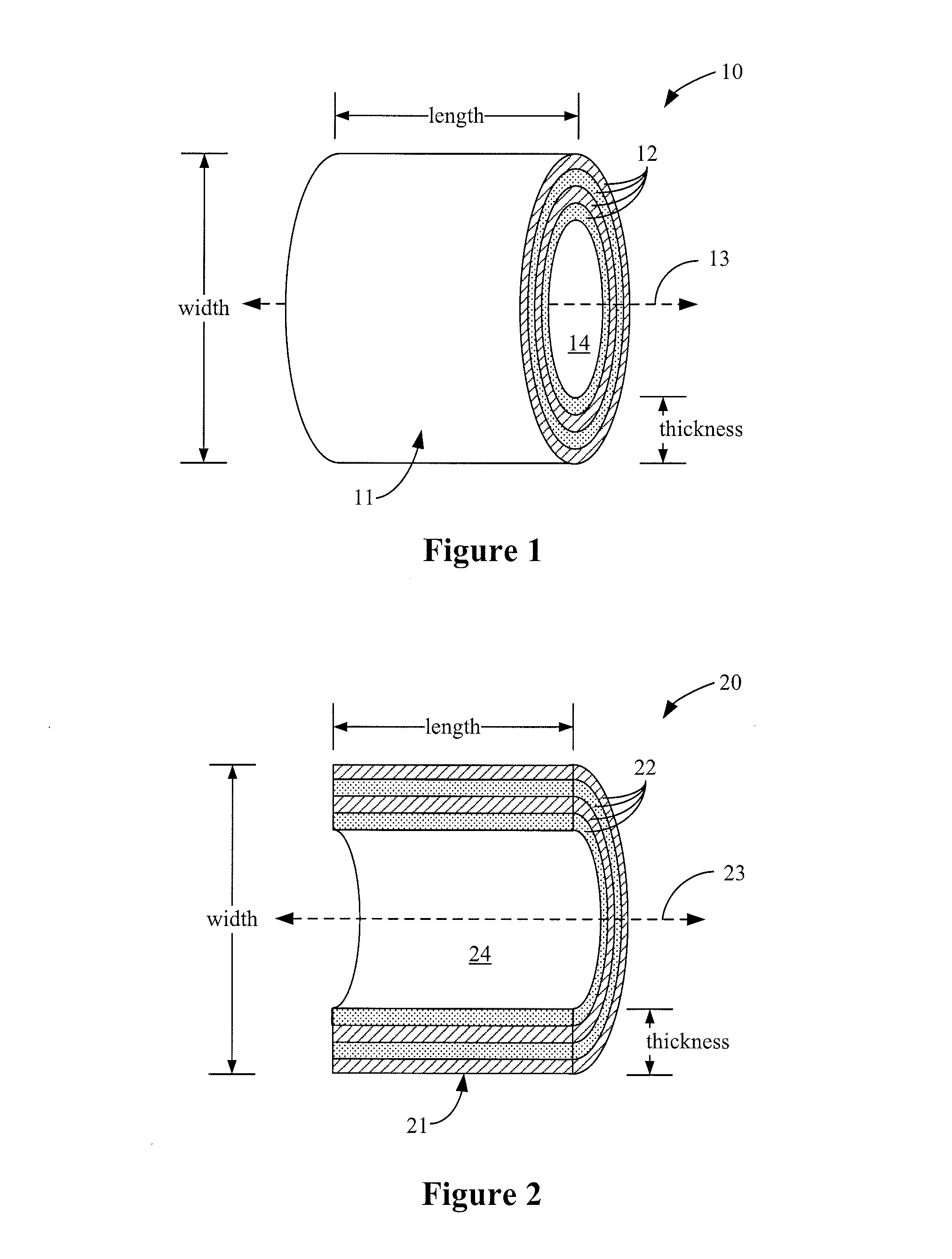Layered reactive particles with controlled geometries, energies, and reactivities, and methods for making the same
a reactive particle and geometries technology, applied in the field of energetic systems, can solve the problems of surface contamination, large particle agglomeration, non-uniform distribution of reactants and densities, etc., and achieve the effects of reducing bi-layer thickness, easy tuning, and increasing reaction speed and sensitivity of materials
- Summary
- Abstract
- Description
- Claims
- Application Information
AI Technical Summary
Benefits of technology
Problems solved by technology
Method used
Image
Examples
Embodiment Construction
[0034]Turning now to the drawings, FIG. 1 shows a first exemplary embodiment of a single reactive particle, generally indicated at reference character 10, which represents one of a plurality of such particles which comprise the energetic composite of the present invention. As can be seen in FIG. 1, the reactive particle has a generally tube-shaped body 11 surrounding a hollow core 14, and radially spaced from a central cylindrical axis 13. The length of the particle is shown taken along the cylindrical axis 13, and the width of the particle is shown taken orthogonal to the cylindrical axis. The tube-shaped body 11 has a multilayer construction with multiple reactive layers 12 stacked in a radially outward direction from the axis. The thickness of the reactive particle is shown as the total thickness of all the multiple reactive layers combined.
[0035]And FIG. 2 shows a second exemplary embodiment of a single reactive particle, generally indicated at reference character 20, which repr...
PUM
| Property | Measurement | Unit |
|---|---|---|
| width | aaaaa | aaaaa |
| width | aaaaa | aaaaa |
| temperatures | aaaaa | aaaaa |
Abstract
Description
Claims
Application Information
 Login to View More
Login to View More - R&D
- Intellectual Property
- Life Sciences
- Materials
- Tech Scout
- Unparalleled Data Quality
- Higher Quality Content
- 60% Fewer Hallucinations
Browse by: Latest US Patents, China's latest patents, Technical Efficacy Thesaurus, Application Domain, Technology Topic, Popular Technical Reports.
© 2025 PatSnap. All rights reserved.Legal|Privacy policy|Modern Slavery Act Transparency Statement|Sitemap|About US| Contact US: help@patsnap.com



